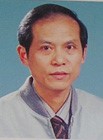

Jiang Aidong (1941- ) is a native of Fuzhou, Fujian province. He graduated from Fuzhou Metallurgy College with a major in mining in 1960. He had been working in Fujian Institute of Research on Structure of Matter under Chinese Academy of Sciences since graduation. He is a senior engineer. His research mainly focused on molten-salt method for crystal growth, which successfully has helped in developing several tens of crystals. In 1970s, he cooperatively invented a new technology of "Water-cooling seed crystal in crucible base". In 1980s, he co-developed single crystal of "China-brand" BBO ( -BaB2O4) and LBO (LiB3O5). His team received CAS Science and Technology Progress Award, Second Class, First Class and Special Class. Jiang applied for several patents, two of which were approved. Jiang publicized over 20 theses in overseas and domestic periodicals.
THE ANIONIC GROUP THEORY OF A NONLINEAR OPTICAL EFFECT AND ITS APPLICATIONS IN THE DEVELOPMENT OF NEW HIGH-QUALITY NLO CRYSTALS IN THE BORATE SERIES
Chen Chuangtian, Wu Bochang and Jiang Aidong
(Fujian Institute of Research on Structure of Matter, Chinese Academy of Sciences, Fuzhou, Fujian 350002, P.R. China)
Abstract
Starting from a general-mechanical perturbation theory on the non-linear optical (NLO) effect in crystals, the authors gives a systematic presentation of the basic concepts and calculation method of the "anionic group theory for NLO effect of crystals" and a brief discussion of the approximation involved. Calculation has been made for the second harmonic generation (SHG) coefficients of a new typical NLO crystal. Comparisons between these theoretical values and experiment values made both on powdered crystals and on single crystals suffice to show the feasibility of the theoretical treatment and calculation methods. On this basis, borate ions of various structure types are classified and systematic calculation is carried out for the NLO susceptibilities of some typical borate crystals with good prospects of applications in optoelectronics.
Through these calculations, a series of structural criteria serving as useful guidelines for searching and developing new NLO crystals in borate series are presented. These structural criteria have good prospects of wider applications in searching and developing for other new types of NLO crystal materials. The criteria are as follows: (1) The planar six-membered ring (B3O6)3- and the planar trigonal (BO3)3- group ,each processing a conjugated pi-orbital system ,are far more favorable for producing larger SHG coefficients than that of the non-planner tetrahedral (BO4)5- group. Moreover, in the planar group, the larger the electronic population in the conjugated pi-orbital sys tem, the greater the SHG effects will decrease in the order X(2w)(B3O6)> X(2w)(BO3)> X(2w)(BO4). (2) The SHG coefficients can be adjusted to a certain extent by suitable arrangement of the three- and four-coordinated B atoms, such as (BO3)3- and (BO4)5-, (B3O6)3- as opposed to (B3O7)5- and (B3O8)7-.
On the basis of these structural criteria, the authors have successfully developed some new high-quality NLO materials, including the -BaB2O4 (BBO) and LiB3O5 (LBO) crystals as an excellent NLO material.
Barium metaborate ( -BaB2O4) possesses large nonlinear optical coefficients, wide transparency range (from 2.6 mm to 0.189 mm) and high damage threshold. In addition to these, the crystal also has a large birefringence that allows phase matching for any harmonic generation process. A particular advantage of the crystal is that it is so far the only material that can effectively produce fourth-and fifth-harmonic generation and wide tunable output (from1.6 mm to about 0.4 mm) in opo's and opa's devices. These outstanding properties make BBO crystal one of the most attractive UV NLO crystal.
Lithium triborate (LiB3O5) is a moderately nonlinear harmonic generating crystal with exceptionally low angular sensitivities for second-and third-harmonic generation of the Nd: YAG fundamental at 1.064 mm. It is highly transparent throughout the near- infrared, visible, and deep-ultraviolet, and also has a very high threshold for optical damage. In addition to these, the crystal can achieve noncritical phase-matching in wide spectral region (from 0.9 mm to near 1.9 mm). Therefore, LBO crystal is excellent double and triple of Nd-type lasers, for high power density and high average power in particular.
At last, suggestions are put forward for searching for and developing other promising new NLO materials in UV region.